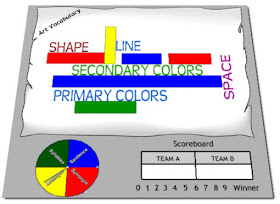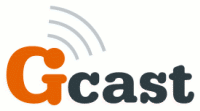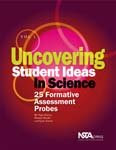 Teachers Love SMART Boards is one of my favorite resources for SMART board lessons, links and ideas for use in the classroom.
Teachers Love SMART Boards is one of my favorite resources for SMART board lessons, links and ideas for use in the classroom. Thursday, December 17, 2009
Interactive Vocabulary Review Games
 Teachers Love SMART Boards is one of my favorite resources for SMART board lessons, links and ideas for use in the classroom.
Teachers Love SMART Boards is one of my favorite resources for SMART board lessons, links and ideas for use in the classroom. Tuesday, December 8, 2009
Monday, November 16, 2009
Discovery Education

Wednesday, July 29, 2009
Google Voice--Transcribes your messages to text FOR YOU!
 Aha! I have been waiting for months for my Google Voice invitation to arrive and I just got it. Is there nothing Google cannot do?
Aha! I have been waiting for months for my Google Voice invitation to arrive and I just got it. Is there nothing Google cannot do? Here is how it went:
- I chose my phone number from a list of possibles--they give you the option of choosing the locality of your phone number if available. So, I chose one that has a local area code.
- I listed the numbers of the phones that I wish to ring when someone dials my Google Voice number. In this case, I want my home phone to ring, as well as my cell phone. So my DH doesn't have to dial many numbers just to reach me.
- If I don't pick up, GV plays my recorded voicemail message and records the callers message for me.
- Then it transcribes the message FOR me into a text message, which I then can access from any browser!!!
- I jumped around a did a little jig.
- You can also download a free app where you can get the messages texted to you, but I didn't do that.
Wednesday, June 24, 2009
Free Technology for Teachers: 30+ Alternatives to YouTube
Thursday, June 18, 2009
Creating Multiple Choice Tests That Grade Themselves
Thursday, June 11, 2009
Xobni...for those of us who have a love/hate relationship with Outlook
I was smitten today.
I find Outlook cumbersome and annoying but necessary. I also receive TONS of attachments from people as part of my job. Since I don't have the time to save them all to my network drive, my Outlook account has become a de facto filing cabinet.
But my cabinet--until today--was so disorganized it took forever to find anything. I actually was thinking this thought today (no joke), "If I had a secretary, I could be so much more productive."
Exactly 25 minutes after that thought, I actually have one, he's very sexy with graphs and all that, and CAPABLE! His name is Xobni! (say ZOB-nee)
Here's what he can do:
Lightning-Fast Email Search
Search email & people faster than you can type. (REALLY??? I can type really fast)
Stay in Touch
Contact info, profile pictures, company info, job titles. All organized. Automatically.
Discover Connections
Xobni searches the web for information about your contacts. Facebook, LinkedIn, Hoovers information & more, brought into Outlook.
Threaded Conversations
Email how it was meant to be read, with conversations in context.
Find Attachments--this is the one that makes me so happy!
Historical attachments available instantly without searching.
There's a cool little video at the xobni site www.xobni.com
Monday, June 8, 2009
Monday, May 11, 2009
Video Demonstration: Uploading Files to Google Docs
If you have a specific question about Google Docs, please let me know and perhaps I can create a video demonstration specific to your question, if you wish!
Video Demonstration: Creating a Google Docs Account
I finally got around to beginning the creation of my Google Docs podcast. I can't actually call it a podcast yet, though, because as of this moment there is only one episode: Creating a Google Docs Account
I will add more though, and if you email me questions I can add video demos that will specifically address your needs!
Monday, April 20, 2009
Pollen Park! Perfect for Interactive Whiteboard Use...

Thursday, April 9, 2009
The Connecticut Science Center is Opening--Finally! But not now...later...
The people at NOVA want your input!
First: Are you a Boston-area middle or high school science teacher currently using technology in your classroom? If so, NOVA would like your input to help shape its future resources. The 90-minute focus groups are being held after school hours on April 28 and 29th (middle school teachers) and May 7 and 8 (high school teachers) at WGBH in Boston. Participating teachers will receive a stipend. If interested, contact Karen Hartley at Karen_Hartley@wgbh.org, or 617.300.3864.
Thursday, April 2, 2009
ASSISTment online math tutoring and assessment--the research says it works!
FREE!
The ASSISTment system provides students with two types of tutoring assistance--scaffolds and hints--when they answer a math question incorrectly.
This screenshot gives you a little bit of an idea of how it looks (I intentionally answered the question wrong, so that I would get a scaffold question):

You can log on to assistment.org to create your free account. There is an ASSISTment teacher wiki that has instructions on how it works, but before I found that I clicked around awhile and I figured some of it out that way.
If you are a teacher, you can even apply for FUNDING to create content for your classroom through a WPI program that is funded by the National Science Foundation. So, get some money for the time that you spend putting content on your ASSISTment account and share your data with them to improve the program. For that info, see the homepage.
Okay, so if you want to look at the data from the research, follow this link:
A Comparison of Traditional Homework to Computer-Supported Homework
Thursday, March 5, 2009
Free podcast hosting with Gcast!

Just this week, I did an interactive whiteboard training session for high school World Language teachers. I did minor in French in college, but since I don't speak Spanish, I needed to beef up the content for this training. So, I invited a particularly spectacular Spanish teacher from a local magnet school to join me. Her name is Melisa and she is extraordinarily inventive in her use of multimedia technologies (including her interactive whiteboard) to make her lessons engaging, authentic and effective.
She introduced me to Gcast. She and her family are native Spanish speakers, but since they are all from different regions of the world, they have different accents (you can't pay for that kind of resource!). In order to take advantage of the opportunity to introduce her students to the spoken word, she uses Gcast to create "answering machine messages" that her students must listen to as a homework assignment. She phones in her podcast (the site says "it's so easy, your grandma can do it" so give it a try) and posts a link to her website. For homework, the students listen to the "message" that she or one of her family members has recorded and fill out a worksheet with several questions related to the message.
The latest example of one of her "messages" is from a make-believe real-estate customer who describes the qualities of a home that she is looking for.
Talk about innovative use! Brava, Melisa!
Sunday, March 1, 2009
5 minute formative assessments for science classes

This is volume one of a three part series by the current president of the NSTA, Page Keeley, and her cohort of educational researchers. It is a fabulous resource for all content areas, K-12. I use these books in a variety of ways; sometimes to begin a content workshop for elementary teachers (so I know where they are, science-wise) or to instigate a discussion on the importance of classroom-based formative assessment with middle level or high school teachers.
Most recently, I used a few probes in a workshop that I did for eight high-school chemistry and physics teachers. We discussed at length the importance of and differences between summative assessments and formative assessments and how each are vital, but serve different essential functions for teachers and students. Summative assessments are assessments OF learning, formative assessments are assessments FOR learning and can be a powerful instructional tool!
Check out the books at NSTA.org. If you are a member, you get a discount. Or, if you buy all three at Amazon.com you can get a discount (and maybe super-saver shipping!).
Having P.E. Twice a Day Would Make Us All Smarter...Really.
You know, neuroscientists who study how humans learn and educators should really get together on a more permanent basis.
One of my favorite lectures was by Dr. John Medina, author of Brain Rules. The most compelling research that he presented was how exercise effects cognitive function--exercise makes you smarter...truly! Now I want to install treadmills in all classrooms and have gym twice a day instead of twice a week.
Check out his videos (he is highly entertaining) at this youtube channel:
Thursday, February 5, 2009
GoogleDocs continues to Rock My World!
You know how there's all sorts of cool stuff on the web that you can download to your computer? As an educator and staff developer, I am constantly downloading the latest curriculum standard document, CT State Embedded Task or whatever other .doc, .ppt, .pdf or .xls file that I need to demonstrate, use, copy, project, etc. So I have copies on my laptop, desktop, jump drive, iPod, even paper copies neatly tabbed and organized in a binder on a shelf...top.
When I am on a new computer off site or at home, I always have done things the old fashioned way: first I save the file to the computer that I'm using, and then I upload it to my blog or attach it to an email or whatever. With GD, all you have to do is go to File>Upload>URL and enter the URL of the document.
Voila! File is uploaded to GD with one click. Easiest way to do it is right click on the link to the document, choose 'save location' and then paste it into the Upload URL box. Yay! Several minutes saved.
This is key during a presentation when you quickly want to show a document, but don't want the lag time in your lesson to allow Adobe Acrobat Reader to open the document if it's a pdf (or Word, Excel, Powerpoint, blah blah blah you get the idea).
To Do List: for my next post I challenge myself to use CamStudio to record me doing all of said (above) steps and publish a tutorial video for you visual learners. For the auditory learners in my audience, read this post aloud to yourself.
Monday, February 2, 2009
Edit to CamStudio post
Well, you have to press record (the red circle, dummy!) and THEN select the region of the screen...THEN you press "play" on the youtube (or other video player) window. You'll have a few seconds of lag time on the beginning of the video.
On my desktop computer at work, I actually have to record the audio from a microphone and make sure that everyone around me is superduper quiet. Alternatively, you can narrate parts of the video...like if you're explaining how to download or use CamStudio you can show full-screen recording while you narrate the steps. Very useful for creating training videos or how-to's for your students.
Googledocs in Plain English on TeacherTube!
Monday, January 26, 2009
Frustrated by YouTube Filters at School?
Check it out, people!!! For those of us teachers who find the Greatest Videos on youtube, but can't access them at school because of local or state filters...here is your Holy Grail. CamStudio. There is a free solution. Camstudio is open source screen video capture software that you can download. Right now. Really! Just go to camstudio.org and download the free version.
Then, all you have to do is choose a youtube video that you just can't live without, select the region on your screen you want to record (usually just the video window, but you can record whatever else you're doing on your desktop if you want...), press record and then watch the video...voila!
Thursday, January 22, 2009
We can't all be leaders...why not follow my blog???

How nerdy are YOU?
Take the quiz yourself and see how nerdy you really are. You might be surprised.
You Are 36% Nerdy |
You're a little nerdy, but no one would ever call you a nerd. You sometimes get into nerdy things, but only after they've become a part of mainstream culture. |
Wednesday, January 21, 2009
My Eyes Have Seen the Glory...
EduCon is in Philadelphia this weekend!
Boy oh boy, do I wish I was going to Philly this weekend. It promises to be a very interesting weekend at the Science Leadership Academy (who is hosting the conference). Click on the title to this post to link to the wiki that has all the conference information, or paste this into your browser:
http://educon21.wikispaces.com/
But since I can't actually go, I am going to be a virtual attendee--yes, that's the beauty of all this social networking buzz that's going on...I can experience it anyway (and save gas!) by joining the wiki and watching live streaming video (or listening to audio) of the conference sessions. You can also watch the videos after the conference has ended.
I actually have never been to an EduCon event, and I found this one through Classroom 2.0, the educators social networking site, par excellence created by Steve Hargadon on Ning. Click on this link to check it out:
www.classroom20.com
Since I am pretty new to classroom 2.0, I am only a little familiar with the network, but I do know they offer a very rich selection of free online workshops for educators! Just what I needed...I swear, this stuff is coming at me faster than I can read. Anyway, as an example of what you can find on this site, take a look at this movie tutorial posted by a facilitator on how to set up an RSS feed reader (bloglines) for your classroom. Be patient, it's a screen capture of what she wanted to show you on her computer. So at first it just looks like a webpage that you can't use...listen for her voice...
http://classroomblogging.com/mov/tutorial_bloglines.mov
Friday, January 16, 2009
GoogleDocs as an Educational Tool!
- Sign up for a free Google account!
I have a gmail account which makes using all sorts of Google tools very easy to integrate into my life, professionally and personally. However, you can open a Google account using your current email address and avoid concerns you may have about opening an additional email account.
*******
Ahh...I will digress...I remember when I opened my gmail account. It was a very swish thing to do because back then you had to receive an invitation from an existing Google account holder to open one. Very exclusive. You had to have a confirmation code text-messaged to your cellular phone and enter the code to open the account--very Mission Impossible. Who knew if the message would self-destruct? Now, it's so easy anyone can do it!
*******
GoogleDocs allows users to create word-processing, spreadsheet and presentation documents online that are compatible with MSOffice and many open-source office suites. It allows you to store, edit, share and collaborate with others to create these documents and you can even IM to the collaborators while you do it! This is an excellent way to facilitate collaborative projects for your students without requiring them to plan face-to-face meetings outside of school.
You can keep track of who is editing the document and when they are doing it (yes! date/time stamps!) and what they are adding to the project. This solves the age-old problem of being able to tell if the workload in a student group is being carried in a balanced way, which is one oft-cited drawback of participating in a group project.
I had the idea of posting times to your students of when you will available via IM to provide real-time feedback to students on their writing or other work. For example, "If you need help with your homework tonight, I will be available online through Google between 5 and 7 pm." Also, students can also ask you questions or you can give answers or feedback when you are online at different times by adding comments to the document in different colors.
One of the best reasons to do this is that there is ONLY ONE, most recent version of each project at any given time. There aren't multiple versions of the file bouncing around to everyone's email address! You don't even have to bring a flash drive with you anywhere to grade anyone's work. It's all online. All the time.
Wednesday, January 14, 2009
Do you have Vernier probes at your school?
Several teachers were very reflective about making sure the technology use was meaningful for the students. Comments included:
1. Make sure you keep a few probes in your classroom for impromptu experimentation and demonstrations. This will encourage you to use the probes frequently in a way that keeping them in a supply closet down the hall cannot.
2. Frequent use of the probes and LoggerPro software reduces the "wow" factor of the technology. This is a good thing. It allows the students to see past the hardware and into the content that you are trying to convey to them.
3. Frequent use also encourages the students to think about how they might use the probeware in their own, student-directed experiments. This is the key to effectively using probe technology to help the students develop 21st century skills. For example, one of the teachers in the training offered this advice:
"I always say to my students, 'Pretend there is a Vernier probe to measure anything you want to measure. Then, invent your experiment. After your experiment is invented, ask me if we have a probe that will do that.' This way, their problem solving is not limited by what they don't know about the available probes." --Middle School Science Teacher
Vernier Grants

FREE Web Seminars on NSTA.org!

Toyota Tapestry Grant Deadline is January 21, 2009!


